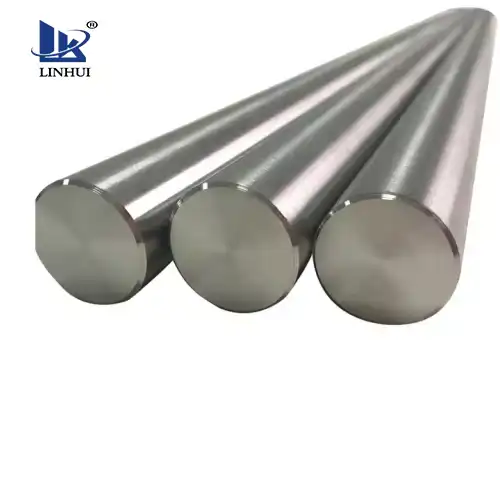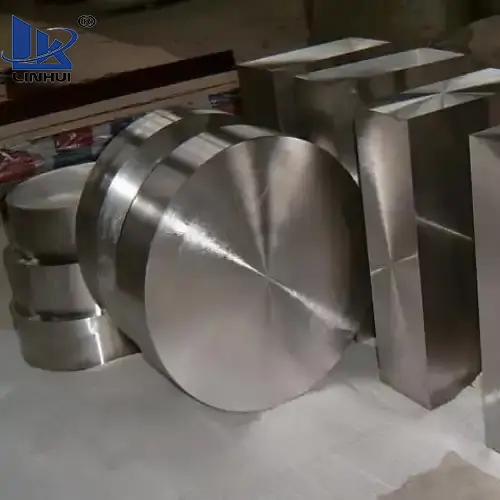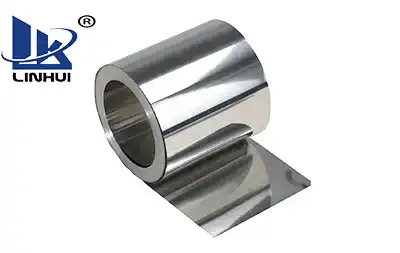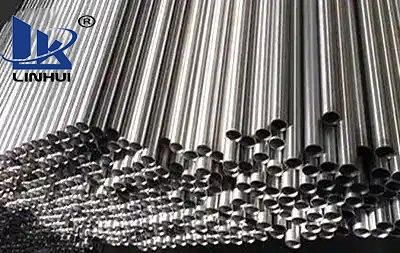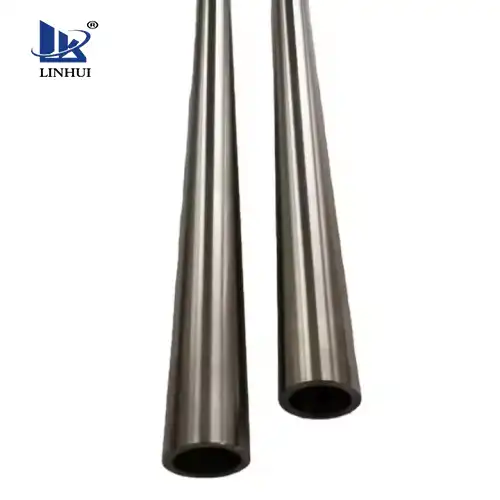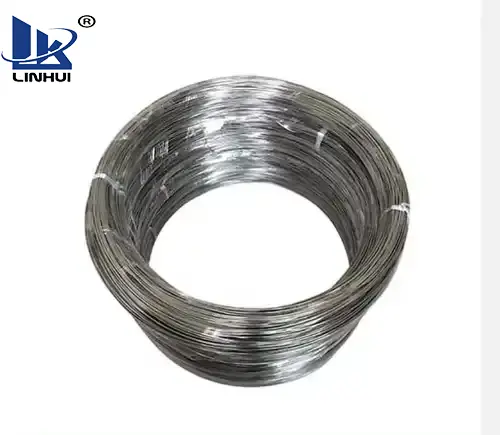Biomedical titanium alloy materials and applications
Biomedical titanium alloy materials specifically refer to a type of functional structural materials used in biomedical engineering, specifically for the production and manufacturing of surgical implants and orthopedic device products. The production and preparation of titanium alloy processing materials involve the fields of metallurgy, pressure processing, composite materials, and chemical industry, and is a recognized high-tech product in the world. Titanium and titanium alloys have gradually entered the field of civilian consumption from the fields of aerospace, aviation, and national defense. Products such as implants and medical devices in the medical and health industry; titanium golf clubs in the sports and leisure industry, as well as titanium glasses frames, titanium watches, titanium bicycles, and other products, the demand for titanium processed materials is constantly increasing. With the vigorous development and breakthroughs of biotechnology, the biomedical metal materials and products industry will develop into a pillar industry of the world economy. Among them, titanium and its alloys have experienced rapid and steady growth in demand in recent years due to their excellent comprehensive properties such as lightweight, low elastic modulus, non-toxic and non-magnetic, corrosion resistance, high strength, and good toughness. At the same time, as titanium alloys begin to enter plastic surgery and other fields, new potential market demands emerge, and the titanium alloy market will grow faster in the future.
Research progress of medical titanium alloys
1.1 Classification of medical titanium alloys
Titanium alloys can be divided into three categories according to the type of material microstructure: α type, α+β type, and β type titanium alloy.
1.2 Development Trend of Medical Titanium Alloys
After literature research, it was found that relevant researchers at home and abroad unanimously believe that the development of medical titanium alloys has gone through three iconic stages. The first stage is represented by pure titanium and Ti-6Al-4V alloy; the second stage is represented by Ti New α+β alloys represented by -5A1-2.5Fe and Ti-6A1-7Nb; the third stage is the main stage of developing and developing β-titanium alloys with better biocompatibility and lower elastic modulus. Ideal biomedical titanium alloy materials must meet the following conditions: good biocompatibility, low elastic modulus, low density, good anti-corrosion properties, non-toxic, high yield strength, long fatigue life, and large plasticity at room temperature. , easy to form, easy to cast, etc. The important alloys that have been widely used in implant materials are Ti-6A1-4V and Ti-6A1-4VELI. There are reports in the literature that V element can cause malignant tissue reactions and may have toxic side effects on the human body, while Al can cause osteoporosis and mental disorders. To solve this problem, biomaterial scientists are currently committed to exploring and researching V-free, Al's new biomedical titanium alloy materials, before that it is necessary to figure out what kind of alloy elements are suitable to add that are both non-toxic and biocompatible. Studies have found that β-titanium alloys containing non-toxic elements such as molybdenum, niobium, tantalum, and zirconium contain a higher content of β-stabilizing elements and have a lower elastic modulus (E=55~ 80GPa) and better shear performance and toughness, it is more suitable for implantation into the human body as an implant.

Applications of titanium alloys
2.1 Medical basis of titanium alloys
The main advantages of using titanium and titanium alloys as human implants are: (1) Density (20°C) = 4.5g/cm3 and lightweight. Implanted into the human body: reduce the load on the human body; as a medical device: reduce the operating load on medical personnel. (2) The elastic modulus is low, and pure titanium is 108500MPa. When implanted into the human body: it is closer to the natural bone of the human body, which is conducive to bone grafting and reduces the stress-shielding effect of the bone on the implant. (3) Non-magnetic, not affected by electromagnetic fields and thunderstorms, which is beneficial to human safety after use. (4) It is non-toxic and has no toxic or side effects on the human body as an implant. (5) Corrosion resistance (biologically inert metal material). It has excellent corrosion resistance in the immersion environment of human blood and ensures good compatibility with human blood and cell tissues. As an implant, it does not produce human pollution and is not harmful to the human body. Allergic reactions will occur, which is a basic condition for the application of titanium and titanium alloys. (6) High strength and good toughness. Bone and joint damage due to trauma, tumors, and other factors. To establish a stable bone scaffold, arc plates, screws, artificial bones, joints, etc. must be used. These implants must be left in place for a long time. the human body will be subject to bending, twisting, squeezing, muscle contraction, and other effects of the human body, requiring implants to have high strength and toughness.
2.2 Medical and orthopedic fields of titanium alloys
Market Situation With the development of titanium alloys, the increase in titanium material varieties, and the reduction in prices, the application of titanium in civil industry has doubled. The CFDA divides medical devices into three levels according to their safety from high to low, and they are supervised and managed by the three levels of government respectively. Implants made of titanium and titanium alloy materials belong to the third category of medical devices and are high-value consumables. The sub-sectors accounting for more than 5% of the market include six major segments: in vitro diagnostics, cardiology, diagnostic imaging, orthopedics, ophthalmology, and plastic surgery. Among them, in vitro diagnostics, orthopedics, and cardiac intervention are the fastest-growing high-value consumables in China. The application of biomedical titanium and its alloy materials has gone through three iconic stages: Initial application In the early 1950s, first in the United Kingdom and the United States, commercially pure titanium was used to manufacture bone plates, screws, intramedullary nails, and hip joints. The Swiss company Mathys also uses Ti-6A1-7Nb alloy to manufacture non-expanded locking intramedullary nail systems (including tibia, humerus, and femur) and hollow screws for the treatment of femoral neck bone fractures. Porous Ni-Ti (PNT) alloy bioactive material is used to manufacture cervical and lumbar intervertebral fusion cages (Cage). Canadian BIORTHEX company has developed a cervical and lumbar intervertebral fusion cage made of porous Ni-Ti alloy patented material ACTIPORE G for the treatment of orthopedic spinal injuries. The new beta titanium alloy can be used as an advanced material for multiple purposes such as orthopedics, dentistry, and vascular intervention. The orthopedic medical device industry accounts for 9% of the global medical device market share and is still growing rapidly. The orthopedic medical devices market is primarily segmented into four areas: trauma, joints, spine, and others. Among them, trauma is the only segment that currently does not have a major market share occupied by foreign companies. The main reason is that the products in this field have low technical content, are easy to imitate, and are less difficult to operate. They can be performed in many second and third-level hospitals, and foreign companies cannot fully cover them. Trauma products can be divided into internal fixation and external fixation devices. Internal fixation trauma products include intramedullary nails, bone plates, screws, etc. In 2012, trauma accounted for 34% of the domestic orthopedics market, joints 28%, spine 20%, and others. 18%. Large joints are high-end medical devices with high technical barriers. At present, mainstream hospitals mainly use imported orthopedic materials. There is still a gap between domestic and imported products in terms of technology, design, research and development, materials, surface treatment processes, etc. Artificial joints are mainly divided into artificial knees, hips, elbows, shoulders, finger and toe joints, etc. Among them, the most important joint replacements include hip joints and knee joints, which together account for more than 95% of the global joint replacement market. Spinal implant devices include thoracolumbar nail plate systems, cervical spine nail plate systems, and fusion cage systems, among which the intervertebral cage system is mainly used for intervertebral disc replacement treatment and is also the most important segment, accounting for approximately the entire spinal implant market. half of.
Conclusion
The superior properties of titanium alloys have contributed to its leading position in the medical field. The material design and preparation technology of titanium alloys has developed rapidly with the breakthroughs in biotechnology and the large demand for medical applications. The medical titanium alloys currently produced are mainly α+β type titanium alloys. From the perspective of preparation technology, the production of TC4 (TC4ELI) currently occupies the main market share. β-type titanium alloy has certain advantages in biocompatibility and mechanical compatibility, so it has become a research hotspot for new medical titanium alloys and is the most potential technology in the field of medical implants. In the future, the production technology of titanium alloys should develop in the direction of low modulus, high strength, good biocompatibility, and mechanical compatibility. From the perspective of development trends, β-type titanium alloys will become the future development direction and the mainstream of the medical titanium alloy market.






